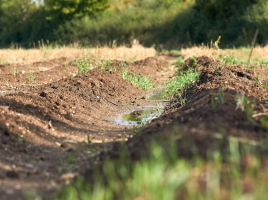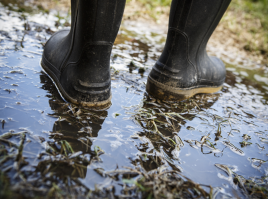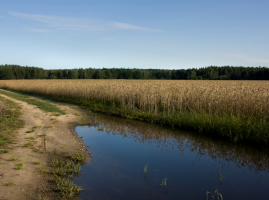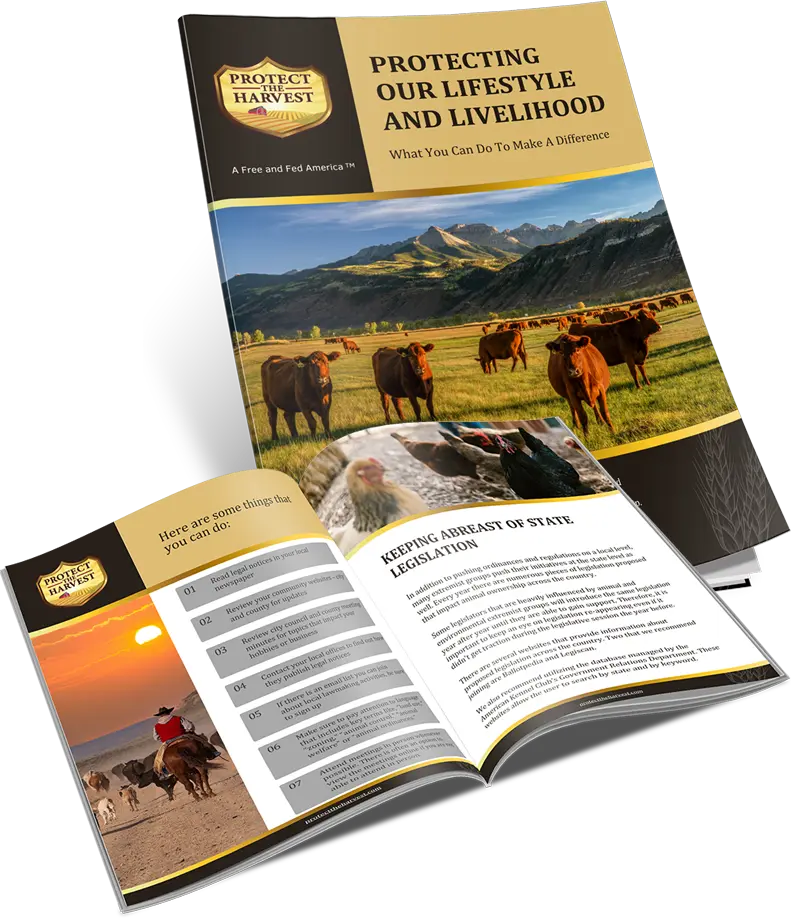THE ONGOING SAGA OF WOTUS – WATERS OF THE UNITED STATES
The Ongoing Saga of WOTUS
After years of muddied waters, it seemed the Trump Administration’s Navigable Waters Protection Rule (NWPR), offering clarity and definition of what a “navigable water” is to the issue of Waters of the United States (WOTUS) and the Clean Water Act (CWA), brought relief to farmers, ranchers, small businesses and others. However, that is no longer the case. With as much drama as a soap opera, the passage of Trump’s NWPR began with environmental extremists starting their assault on the new, clear definitions and filing lawsuit after lawsuit.
Understanding the Timeline:
The Clean Water Act (CWA) established the basic structure for regulating discharge of pollutants into the waters of the United States and regulating quality standards for surface waters. The basis of the CWA was enacted in 1948 and was called the Federal Water Pollution Control Act. The act was significantly reorganized and expanded with amendments in 1972 and became known as the “Clean Water Act.” It has since been refined further in 1981 and 1987.
The Clean Water Act of 1986 defined the waters of the United States as:
1. All waters which are currently used, or were used in the past, or may be susceptible to use in interstate or foreign commerce, including all waters which are subject to the ebb and flow of the tide;
2. All interstate waters including interstate wetlands;
3. All other waters such as intrastate lakes, rivers, streams (including intermittent streams), mudflats, sandflats, wetlands, sloughs, prairie potholes, wet meadows, playa lakes, or natural ponds, the use, degradation or destruction of which could affect interstate or foreign commerce including any such waters:
- Which are or could be used by interstate or foreign travelers for recreational or other purposes; or
- From which fish or shellfish are or could be taken and sold in interstate or foreign commerce; or
- Which are used or could be used for industrial purposes by industries in interstate commerce;
- All impoundments of waters otherwise defined as waters of the United States under this definition;
- Tributaries of waters identified in paragraphs (s)(1) through (4) of this section;
- The territorial sea;
- Wetlands adjacent to waters (other than waters that are themselves wetlands) identified in paragraphs (s)(1) through (6) of this section; waste treatment systems, including treatment ponds or lagoons designed to meet the requirements of CWA (other than cooling ponds as defined in 40 CFR 423.11(m) which also meet the criteria of this definition) are not waters of the United States.
- Waters of the United States does not include prior converted cropland. Notwithstanding the determination of an area’s status as prior converted cropland by any other federal agency, for the purposes of the CWA, the final authority regarding CWA jurisdiction remains with United States Environmental Protection Agency (EPA).
21st Century Interpretation- Take 1
In 2001 and 2006, in an attempt to clarify the existing Clean Water Act, the Supreme Court weighed in. In two separate cases, they ruled that the EPA and U.S. Army Corps of Engineers had overstepped their federal regulatory authority. SCOTUS ruled that both agencies had adopted a very broad interpretation of “navigable waters” as it pertains to the enforcement of WOTUS under the Clean Water Act.
Instead of clarifying what the actual waters of the US were, these acts seemed to make them even more confusing. However, that would be changing in the next scene.
21st Century- Take 2
In 2015, President Obama, claimed that the earlier cases overturned by the Supreme Court of the United States (SCOTUS) created confusion. Therefore, the Obama administration introduced sweeping new clean water regulation meant to restore the federal government’s authority over the nation’s rivers, lakes, streams and wetlands.
This rule applied to about 60 percent of the nation’s bodies of water. It came as part of a broader effort by the Obama administration to use the president’s executive authority to build a major environmental legacy. The administration strategically applied an executive order to circumvent the requirement of new legislation from the Republican-controlled Congress. This tactic was employed knowing that the chance of that legislation passing were nil.
The EPA got in hot water with the Government Accountability Office, which found that the EPA broke the law with its social media and grassroots lobbying campaign which advocated for its own WOTUS rule.
Environmental Protection Agency (EPA) officials said at that time the new rule would clarify authority. It would allow the government to once again regulate smaller bodies of water — although it did not restore the full scope of regulatory authority granted by the 1972 law.
Of course, environmental extremists praised Obama’s new WOTUS ruling, while farmers, ranchers and other groups argued that it would stifle economic growth and intrude on the rights of property owners.



2020 – Navigable Waters Protection Rule (NWPR)
In 2017, President Trump recognized the legal flaws and agency overreach in the 2015 rule set forth by the Obama administration. The EPA was directed to reexamine the rule and determine whether to repeal or revise it. Thus began the back and forth “ping pong” game between political parties, government agencies, agriculture advocate groups, various courts, and states. This delayed the implementation of the Trump Administration’s Navigable Waters Protection Rule, which was finally implemented on June 22, 2020.
Trump’s NWPR provided the clarity various industries had been crying out for by providing categorical listings of waters and wetlands that are considered WOTUS (i.e. territorial seas, waters used in interstate commerce, tributaries, lakes, ponds, impoundments of jurisdictional waters, and adjacent wetlands), and those that are excluded, including ephemeral streams and isolated wetlands. Upon implementation, environmental groups, and others immediately filed lawsuit after lawsuit. The lawsuits claimed that the NWPR endangered species that had never been seen in certain area, but “might” appear magically.
2021 – Enter Stage Left
President Biden, on day one of his tenure, immediately rescinded the NWPR and ordered the EPA and Army Corps of Engineers to draft new language. By rescinding the NWPR it brought WOTUS and the CWA right back to the confusing, unclear, and unscientific definitions of the pre-Obama era.
From an article in E&E News dated October 13, 2021:
“The Trump Administrations’ Navigable Waters Protection Rule, which relied on the narrow interpretation of Clean Water Act jurisdiction offered by the late Justice Antonin Scalia in Rapanos v. U.S., was struck down by a federal court in Arizona. The Trump administration’s rule significantly narrowed the law’s reach, pulling back what wetlands and streams were jurisdictional by about 51 percent and 18 percent, respectively.
Since the court’s decision, the EPA has reverted to the 1986 definition of WOTUS, relying on guidance from the George W. Bush administration about how to apply that definition.”
As the EPA and Army Corps of Engineers under the Biden administration tackle the re-writing of what constitutes waters of the U.S., EPA Administrator Michael Regan says the goal remains for “clarity, for certainty and for a durable rule.” He says the agencies will not be reinstating either the Trump-era Navigable Waters Protection Rule or the Clean Water Rule introduced in 2015 by the Obama administration.
Republican Senators Introduce Legislation to Uphold NWPR
In early 2021, a group of Republican Senators on the Senate Environment and Public Works Committee led the introduction of legislation to codify the 2020 Navigable Waters Protection Act.
Senators from multiple states all over the country joined in the cosponsoring of the measure. They are concerned that the Biden’s EPA and U.S. Army Corps of Engineers (USACE) new rule would go even further than Obama’s WOTUS Clean Water Rule. It is thought that the EPA could go as far as regulating ditches on private lands and converted croplands. This overreach could ultimately inflict severe harm to agriculture and to other sectors of the economy.
In July, ranking member of the Committee on Environment and Public Works, Senator Shelley Moore Capito (WV) wrote a follow-up letter to the EPA Administrator Michael Regan to again ask for clarification as to claims made by the EPA that “the {NWPR} rule is leading to significant environmental degradation.”
U.S. District Court for District of Arizona Vacates and Remands NWPR
On August 30, 2021, yet another edit to the screenplay’s plot was added when a federal judge threw the Trump Administration rule that scaled back the federal definition of the Waters of the United States (WOTUS). (Pasqua Yaqui Tribe v. EPA)
The ruling in the U.S. District Court for the District of Arizona, which applies nationwide, will afford new protections for drinking-water supplies for millions of Americans, as well as for thousands of wildlife species that depend on America’s wetland acreage. The EPA and the U.S. Army Corps of Engineers had successfully pressed courts in other parts of the country to allow the Biden Administration to come up with a new definition of WOTUS without immediately scrapping the Trump Administration’s rule. Nevertheless, this ruling found that the Trump Administration’s rule, which gutted the Obama Administration’s 2015 Clean Water Rule, was too flawed to keep in place.
American Farm Bureau Federation Weighs In
The American Farm Bureau Federation (AFBF) submitted recommendations that any new regulations on the definitions of “waters of the United States” include the following elements:
- Adhere to Supreme Court precedents;
- Use Congress’ Clean Water Act policy as a guidepost in rulemaking;
- Define WOTUS in clear terms that are easy to apply in the field;
- Limit jurisdiction over non-navigable tributaries;
- Limit jurisdiction of wetlands to those that abut other WOTUS;
- Exclude prior converted cropland
In their recommendations, AFBF expressed disappointment in the EPA’s decision to replace NWPR and explains why the rule should be left in place. AFBF further stated that regulation of low spots on farmlands and pastures as jurisdictional “waters” means that any activity on those lands that moves dirt or applies any product to that land is then subject to regulation.
Stay Tuned for the Next Episode
As lawsuits fly and public comments are closed, it is now the EPA and Army Corps of Engineers’ job to rewrite WOTUS yet again. Hopefully, this time, they will take into consideration that the NWPR actually DEFINED what should be considered a “waters of the U.S.” The NWPR made certain that ambiguous designations did not occur. It ensured that vernal pools, irrigation or rainfall puddles, ephemeral streams, and other water pooled that are acts of nature did not impact farmers, ranchers and other groups.
Protect The Harvest will continue to follow this “play” out.
Keep the popcorn handy.
Links:
Bill – “Define the WOTUS Act” HERE
Letter by Senator Shelley Moore HERE
Letter by American Farm Bureau Federation ( AFBF ) HERE



